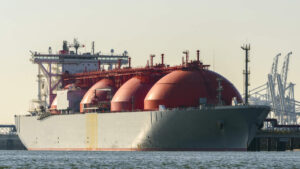Got Gas? Gas-fired recovery hinges on the Beetaloo, but cheap it ain’t

Anyone smell a gas-fired recovery coming? Picture: Getty Images
Smell that?
It’s not gas. It’s the scent of desperation coming from the federal government as it continues to extol the virtues of its gas-fired recovery.
The latest facet of this strategy is the award of first grants from its $50m Beetaloo Cooperative Drilling Program with Empire Energy Group (ASX:EEG) being the lucky recipient of three grants worth up to $21m.
While there is little doubt that these grants will help kick-start gas development in the highly prospective Beetaloo Basin, it also comes as Victoria records spot prices of up to $20 per gigajoule, the highest it has been since June 2016.
There are extenuating circumstance of course, with a combination of a cold winter, high international prices and unplanned downtime on one of three gas processing plants at ExxonMobil’s Longford plant blamed for the high prices.
However, it does underscore one of the key tenets of the gas-fired recovery plan, which is to ensure sufficient supplies of gas.
Making said gas affordable, however, is an entirely different proposition.
The Beetaloo Basin
So is the Beetaloo Basin the answer to the East Coast’s gas woes?
The short answer is probably yes as the region is considered to host world-class shale gas resources with the Northern Territory Government estimating that there could be in-place resources of over 200,000 petajoules in the Beetaloo.
For a bit of context, one petajoule equals about 947.8 million standard cubic feet (MMscf) of gas.
Every MMscf of gas equals about 1,000 million British Thermal Units (MMBtu) while every MMBtu can heat up 12,800 cups of coffee – enough to keep your average Melbournian productive for a year.
That resource is also equal to about 189.56 trillion cubic feet of gas, or nearly five times the proved, probable and possible reserves of 40Tcf that was found in the giant Gorgon gas field offshore Western Australia.
While this might seem like good news for the government’s gas-fired recovery plan, its important to inject a word of caution here.
In-place resources do not equal commercially recoverable reserves, so take those Beetaloo resource numbers with a pinch of salt.
Here’s where the other part of the long answer comes to play.
The Beetaloo is a shale basin and while it has substantial gas resources, shale wells do not typically flow substantial amounts of gas without substantial horizontal sections that are fracture stimulated, which increases development costs.
Case in point is Empire’s vertical Carpentaria-1 well, which flowed at an initial peak of 0.5MMscf per day.
Not bad for a well targeting shales but a far cry from Strike Energy’s (ASX:STX) recent West Erregulla-4 well that flowed at rates of up to 35MMscf/d from the conventional Kingia Sandstone in the Perth Basin.
High-cost gas
And there’s where the gas-fired recovery plan encounters a bit of a setback.
There’s little doubt that gas from the Beetaloo can alleviate supply concerns on the East Coast, but it will come at a cost.
A comparison could be made with the coal seam gas sector that is arguably only economical because it supplies gas into international markets.
Even if gas from the Beetaloo were to be reserved entirely for domestic use, the expectation that it will be affordable is laughable.
This entire discussions hasn’t even considered to cost of building the required infrastructure to support the development of the basin.
Small wonder then that climate change and rechargeable energy proponents have been critical of any gas-fired recovery plans.
Related Topics

UNLOCK INSIGHTS
Discover the untold stories of emerging ASX stocks.
Daily news and expert analysis, it's free to subscribe.
By proceeding, you confirm you understand that we handle personal information in accordance with our Privacy Policy.








